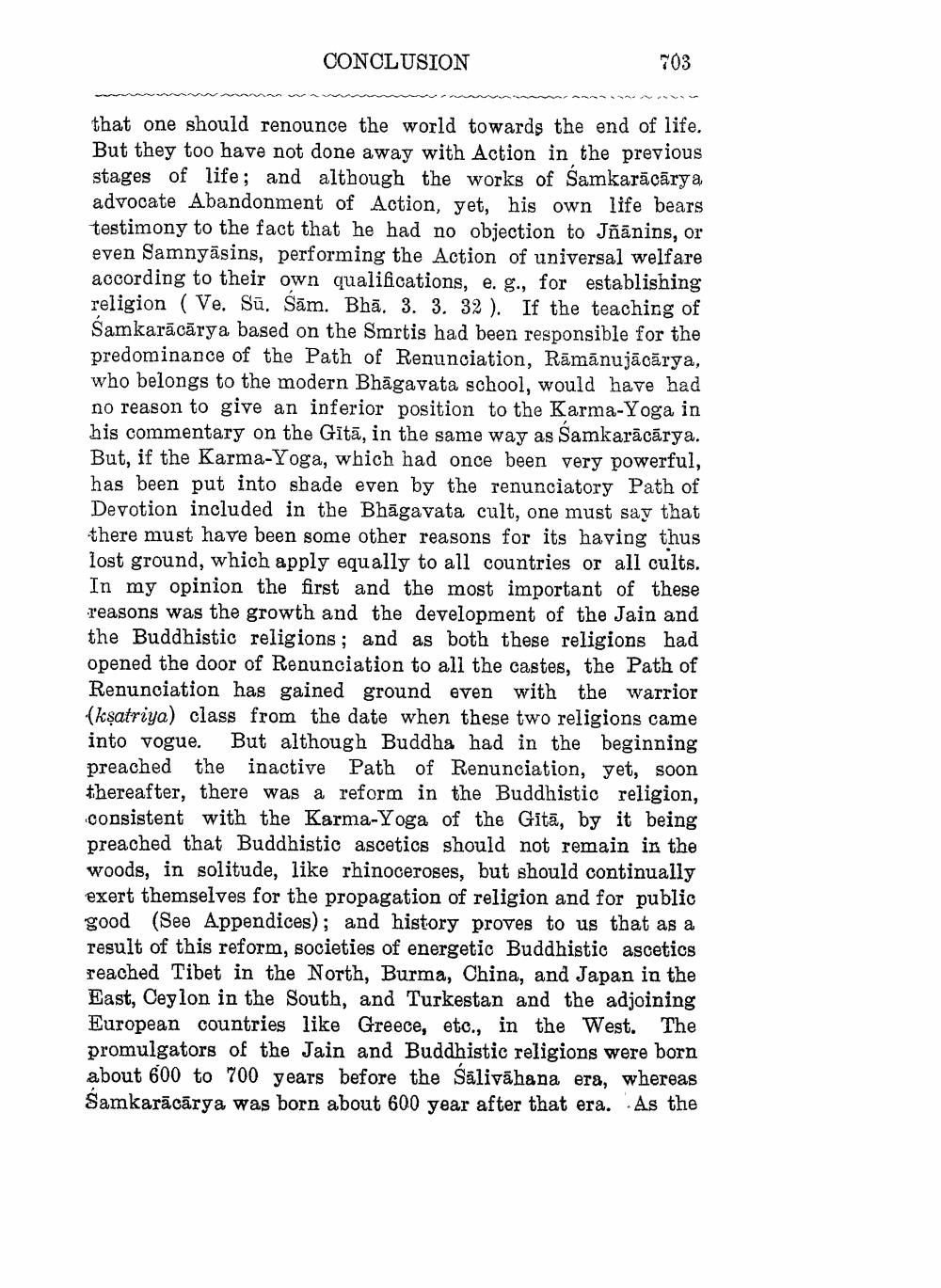________________
CONCLUSION
703
that one should renounce the world towards the end of life. But they too have not done away with Action in the previous stages of life; and although the works of Samkarācārya advocate Abandonment of Action, yet, his own life bears testimony to the fact that he had no objection to Jñanins, or even Samnyasins, performing the Action of universal welfare according to their own qualifications, e. g., for establishing religion (Ve. Su. Sam. Bha. 3. 3. 32). If the teaching of Samkaracarya based on the Smrtis had been responsible for the predominance of the Path of Renunciation, Rämänujācārya, who belongs to the modern Bhagavata school, would have had no reason to give an inferior position to the Karma-Yoga in his commentary on the Gita, in the same way as Samkarācārya. But, if the Karma-Yoga, which had once been very powerful, has been put into shade even by the renunciatory Path of Devotion included in the Bhagavata cult, one must say that there must have been some other reasons for its having thus lost ground, which apply equally to all countries or all cults. In my opinion the first and the most important of these reasons was the growth and the development of the Jain and the Buddhistic religions; and as both these religions had opened the door of Renunciation to all the castes, the Path of Renunciation has gained ground even with the warrior (kṣatriya) class from the date when these two religions came into vogue. But although Buddha had in the beginning preached the inactive Path Path of Renunciation, yet, soon thereafter, there was a reform in the Buddhistic religion, consistent with the Karma-Yoga of the Gita, by it being preached that Buddhistie ascetics should not remain in the woods, in solitude, like rhinoceroses, but should continually exert themselves for the propagation of religion and for public good (See Appendices); and history proves to us that as a result of this reform, societies of energetic Buddhistic ascetics reached Tibet in the North, Burma, China, and Japan in the East, Ceylon in the South, and Turkestan and the adjoining European countries like Greece, etc., in the West. The promulgators of the Jain and Buddhistic religions were born. about 600 to 700 years before the Salivahana era, whereas Samkarācārya was born about 600 year after that era. As the




